- A bill in the General Assembly would reduce the maximum number of early voting days in North Carolina from 17 to eight
- Reducing early voting has little to no impact on voter turnout
- Reducing the number of early voting days would have small benefits for county election boards, political parties, and civic groups
A bill in the General Assembly would reduce the maximum number of early voting days by about half. The impact of such a change would be less than some might think.
A Bill to Reduce Early Voting Days
House Bill 303 would shift the start of early voting from “not earlier than the third Thursday before an election” to “not earlier than the second Saturday before an election” (emphasis added), reducing the maximum number of early voting days from 17 to eight. The bill is sponsored by Reps. Ted Davis, Jr. (R–New Hanover), George Cleveland (R–Onslow), Mike Clampitt (R–Jackson, Swain, Transylvania), and Chris Humphrey (R–Greene, Jones, Lenoir).
Early voting, as we know it, is a somewhat accidental creature of a series of legislative acts. It started in 1977 to help people who qualified to vote absentee (such as disabled voters or those who would be out of town on election day). It allowed them to request and vote an absentee ballot in one stop at the county board of elections office, which is why early voting is officially called “one-stop absentee” voting. In subsequent legislation about two decades ago, the General Assembly introduced “no-excuse” absentee voting, allowed counties to set up remote one-stop voting locations, and expanded the number of days early voting was available.
The “Less Early Voting Equals Less Turnout” Myth
One of the persistent myths about voting is that if most of Party A’s supporters vote by a particular method, Party A can get more total votes by increasing access to that method, and Party B can reduce Party A’s total votes by limiting access to that method. We see that myth in journalistic claims such as “any Democratic strategy for victory will rely heavily on turning out early voters.” While focusing on early voting could be a tactic for getting out the vote, it is certainly not the only tactic available for Democrats.
Members of both major parties believe that myth, however, which is why Republicans tend to want less early voting and Democrats tend to want more. We see it in that all the sponsors of HB 303 are Republicans, and we will see it in party divides on votes for the bill if it reaches the House floor. The myth is so persistent that one left-wing group pronounced, “cutting early voting is voter suppression.”
Since the link between early voting and voter turnout is tenuous, any claim that reducing early voting days suppresses turnout is spurious.
There are two problems associated with the myth. The first is that more early voting does not lead to higher turnout. Declines in other forms of voting offset a rise in early voting; we are getting different voters, not more voters. Indeed, early voting may even lower turnout overall. A 2013 political science study found that early voting appears to “lower the likelihood of turnout by three to four percentage points,” likely because it reduces the “civic significance of elections” and alters how campaigns invest in get-out-the-vote efforts.
Since the link between early voting and voter turnout is tenuous, any claim that reducing early voting days suppresses turnout is spurious.
Uncertain Benefits of Early Voting, but Sure (If Small) Benefits of Fewer Early Voting Days
The second problem with the early voting turnout myth is that less early voting does not automatically lead to less voting for Democrats. The idea that it would decrease overall turnout by making one form of voting less common is misguided. It would be like punching water; rather than reducing votes, you just move them.
We saw that in the 2020 election. A relative decline in the proportion of Democrats voting one-stop did not cost the Democrats votes overall. In the governor’s race, Dan Forest earned 21,000 more early votes than Roy Cooper, but Cooper won the race by 250,000 overall because many Democrats shifted to voting by mail due to coronavirus fears. Every statewide Democratic candidate lost the early vote that year, including the other three Democrats who won the overall vote.
There would be some real, if small, benefits for county governments by reducing the number of early voting days, however.
I contacted three randomly chosen county boards of elections, asking them about costs associated with early voting during the 2022 General Election. Davie County, in the western Piedmont, reported spending $44,500 on early voting or “approximately $3,423 per day.” Jones, a small county on the coastal plain, spent “around $6,000 on additional salaries for the entire one-stop voting period.” Johnston, a relatively large county southeast of Raleigh, sent a spreadsheet showing that they spent $261,550 (including $45,180 for “rent of sites” and $216,370 for “cost of precinct officials”) on their seven one-stop voting locations. If there were fewer days of early voting, county governments could spend some of those funds on other things.
In addition, fewer early voting days would help political parties and civic groups by not forcing them to spread election observers or so-called “vote protectors” thinly over two and a half weeks of one-stop voting.
Early Voting Bill Would Be No Game-Changer
In short, HB 303 would provide some benefits, while having little to no effect on overall turnout. A bigger change, from an election integrity standpoint, would be to move the last day of early voting up a few days to give election officials enough time to verify the voter registrations of people who register and vote during early voting. That would help prevent the problem of “ghost voters,” whose ballots are counted even though their registrations were never confirmed.
As it is, if this bill were to become law, expect to be underwhelmed by the results.
